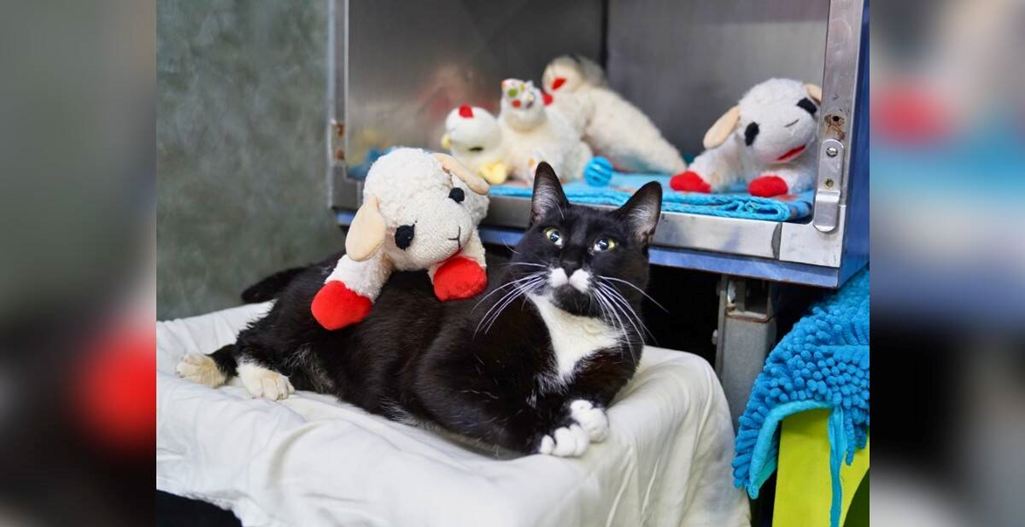Barnaby wasn’t exactly a typical cat. Most of the felines at the Maplewood Animal Rescue preferred the high, quiet perch of the cat tree, surveying their temporary domain with cool indifference. Barnaby, a small, slightly scruffy orange tabby, preferred the floor. And not just any floor—specifically, the worn linoleum of his tiny corner kennel.
He had arrived at Maplewood underweight and terrified, the survivor of a difficult winter outdoors. He didn’t hiss or swat; he simply withdrew. He slept curled tightly into a nervous comma, making himself as small as possible in the vast, echoing space of his enclosure. He seemed to carry the cold loneliness of his past life in his very bones.
The shelter staff, aware of Barnaby’s deep anxiety, tried everything to coax him out of his shell. They offered heated blankets, catnip, and the highly coveted fuzzy mouse toy. He ignored them all. He was polite, eating his food only when no one was looking, but he was unreachable.
One Tuesday, a donation arrived from a local pet supply store: a huge box of lamb-shaped plush dog toys. They were small, fluffy, and had a soft, comforting texture. A volunteer, Martha, placed one in Barnaby’s kennel, mostly just to see what he would do.
Barnaby didn’t immediately react. He watched the white, woolly creature from beneath his brow, his large, amber eyes narrowed with suspicion.
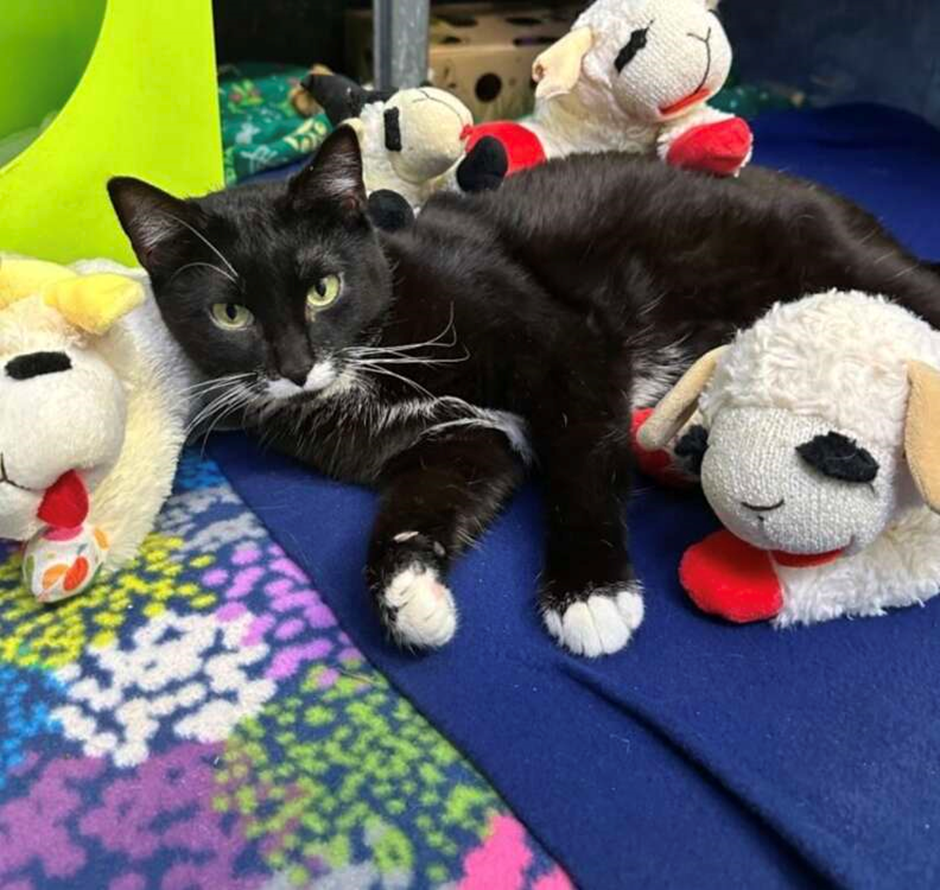
Later that afternoon, Martha was doing her rounds when she paused by Barnaby’s kennel. The lamb toy was gone. Puzzled, she scanned the enclosure. Then she spotted it.
Barnaby wasn’t playing with the lamb. He had carried it, gently, to the back corner of his kennel, tucking it snugly beneath his chin, using it as a pillow. The lamb was white against his orange fur, a small, tangible piece of soft comfort. For the first time since he arrived, Barnaby’s breathing seemed deep and regular, and the anxious crease between his eyes had smoothed out.
Martha understood immediately. This wasn’t a toy; it was a surrogate. It was the soft, reliable presence that his hard, lonely life had never afforded him.
Word spread through the shelter about Barnaby’s peculiar obsession. The staff quickly realized that the lambs weren’t distractions; they were necessities. They became a critical part of his emotional well-being. Every day, Barnaby would get a new lamb, and every day, he would meticulously transport it to his safe corner.
He never tore them. He never chewed them. He simply collected them.
Soon, the single lamb became two, and two became four. Barnaby used the plushies like building blocks for comfort. He arranged them carefully, forming a soft, insulating barrier against the cold bars of his cage.
He started by lining the bottom of the corner with two lambs, forming a soft floor. Then he stacked two more on the walls, creating a makeshift, fleece-lined nest. As his collection grew, so did the complexity of his structure. He built a rampart of lambs, a soft, fluffy fortress that separated him from the stressful sights and sounds of the bustling shelter hallway.
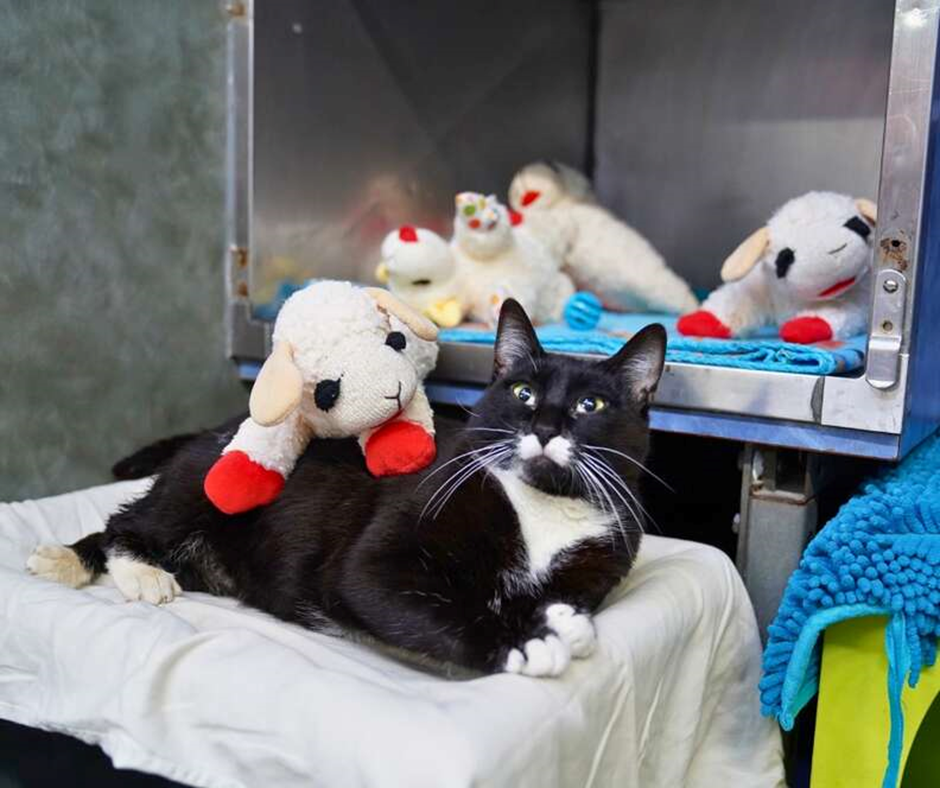
It was a beautiful, heartbreaking sight. Barnaby was literally building a home out of the only material he trusted. In a place where nothing was permanent—not his bed, not his visitors, and certainly not his security—the lambs were his constant, unchanging flock. They represented stability and warmth, the things a homeless cat needed most.
He would often spend hours sitting right in the center of his collection, perfectly framed by the sea of white wool. He looked like a king on a fleece-lined throne, or, more accurately, a deeply tired traveler who had finally found his rest stop.
As his collection reached critical mass (at least a dozen lambs now), Barnaby’s behavior evolved. He didn’t just sleep on them; he started tending to them.
He would gently groom the lambs, licking the woolly fabric in an act of profound, quiet care. Sometimes, he would nudge a lamb with his head, repositioning it until it was “just right” in the soft corner. The staff theorized that, having been denied the safety of a permanent home or family, Barnaby was projecting his longing onto the softest, most reliable things he could find. The lambs weren’t just his possessions; they were his family.
One day, a young, curious kitten named Pip was placed in the kennel next to Barnaby’s. Pip was playful, bouncing off the walls, clearly intimidated by the world.
Barnaby watched Pip’s frantic activity for a long time. Then, with careful intention, he performed an act of immense generosity: he used his mouth to pick up a prime, central lamb—a cornerstone of his fortress—and pushed it under the bars into Pip’s kennel.
It was an offering, a gift of comfort given from a place of deep understanding. The small, scared orange cat who had to build his own security was now sharing it with someone else. Pip, confused but instinctual, promptly curled up with the soft gift and fell asleep.
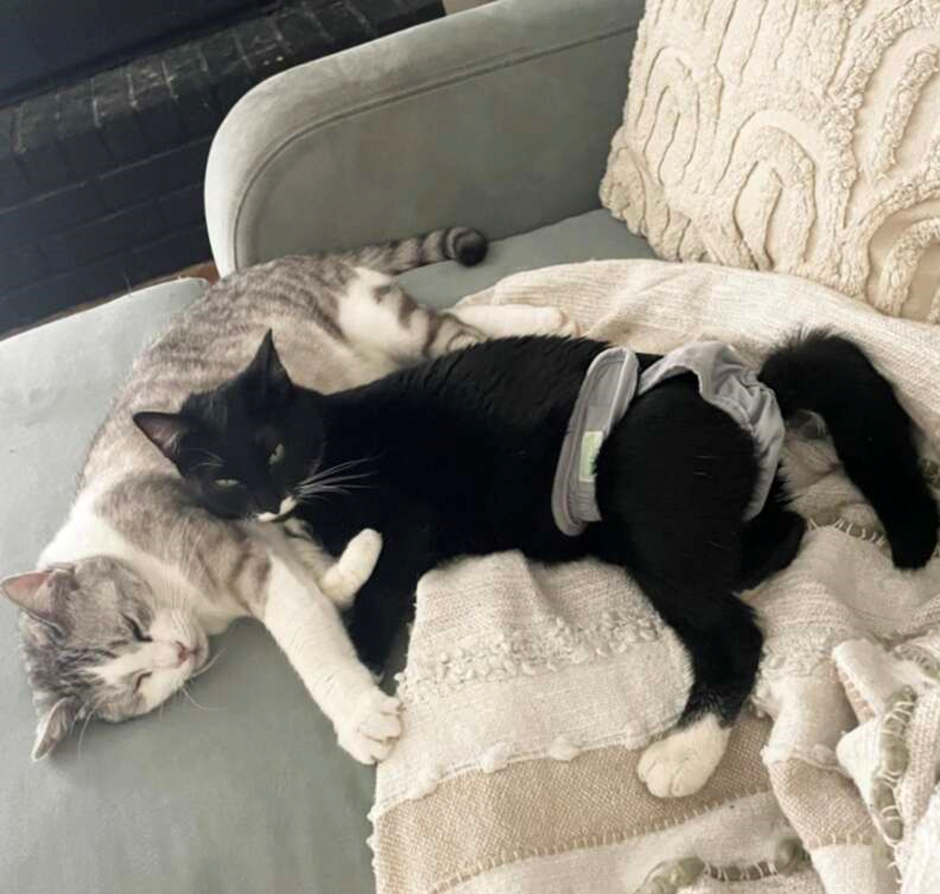
Barnaby’s story, and the visual proof of his lamb army, became an online sensation. People were captivated by his devotion to these tiny sheep, a visible manifestation of his need for comfort.
One couple, Elias and Chloe, drove six hours just to meet the “Lamb Collector.” They didn’t approach him immediately. They sat on the floor across the hallway, reading a book about sheep farming, letting Barnaby watch.
They didn’t bring treats or new toys. They brought a quiet certainty.
When Elias finally knelt by the kennel, he didn’t reach in. He just spoke softly: “Your house is beautiful, Barnaby. It looks so safe.”
Barnaby, surrounded by his fortress, looked at the man. He was assessing, calculating. He had built his own home; now, he needed to know if this human could be a part of it.
After an hour, Elias laid his hand, palm up, just outside the bars. Barnaby took a tentative step, then another. He rubbed his cheek against the back of Elias’s hand, a soft, rumbling purr starting in his chest—a sound as fragile and precious as spun sugar.
When the time came to leave, the staff packed a small box: Barnaby’s essential belongings. It contained his food, his documents, and all twelve of his lambs.
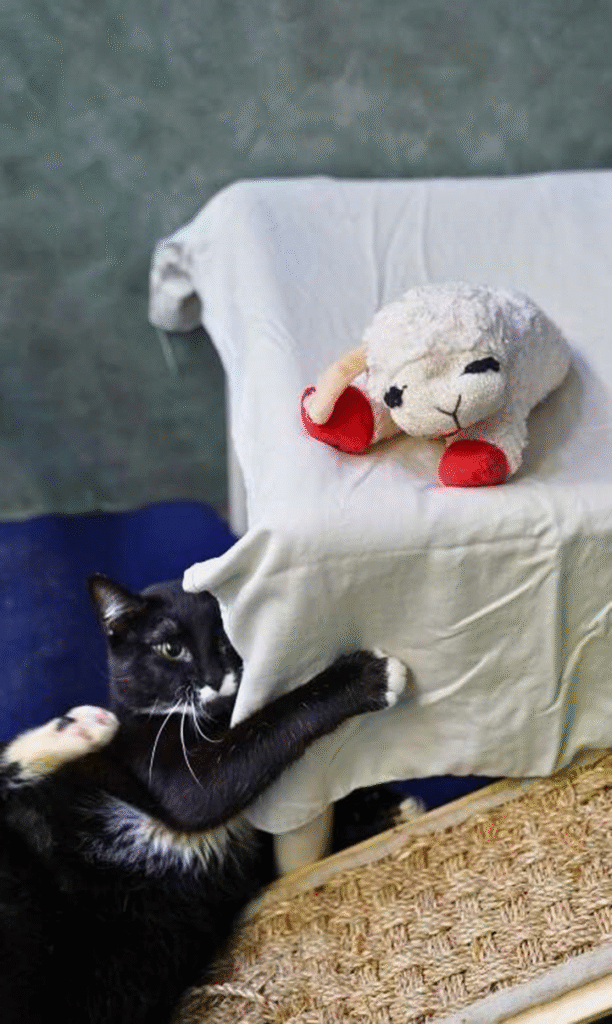
In Elias and Chloe’s car, Barnaby was nervous, but not panicked. He was nestled in a small bed, surrounded by his woolly entourage. He knew his house was with him.
In his new, real home, Barnaby found warmth and space and light. Elias and Chloe placed the twelve lambs in a pile in a sunny spot in the living room. Barnaby walked over, circled once, and settled down in the middle of them. He wasn’t building a barrier anymore; he was just enjoying the soft certainty of a place where he belonged.
He still prefers his corner, and he still sleeps with his lambs. But now, when Elias or Chloe approaches, he doesn’t retreat. He simply lifts his head, rolls onto his back, and invites them into his fluffy, fleece-lined sanctuary. Barnaby finally had his family, but he never forgot that he first had to build his own home, one small lamb at a time.

